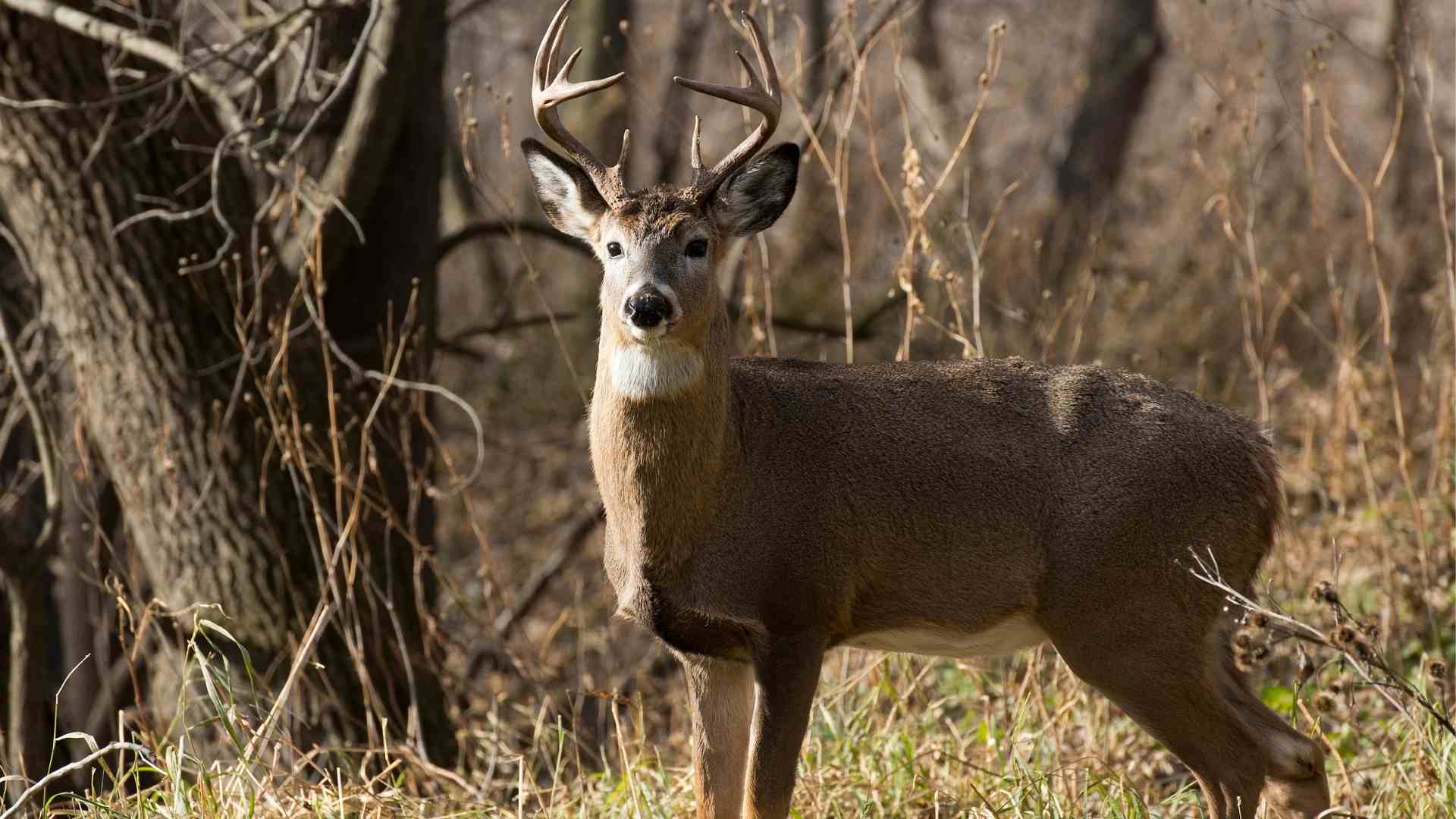If you want your deer to reach their full potential in terms of antler size, then you need to make sure they’re getting the proper nutrients. Deer need high levels of calcium and phosphorous to produce healthy antlers.
Contents (Jump to Topic)
ToggleWhat Nutrients Do Deer Need for Proper Antler Growth?
Some supplements are designed to help increase body size, while others are made explicitly for antler growth.
Make sure you’re providing the right supplement for your goals. Calcium and phosphorous should be included in any deer antler supplement you choose to purchase or make at home.
Calcium is an essential part of healthy bone structure, and phosphorous helps to strengthen the skeletal system.
Antler’s growth will be slower without these two components and eventually stop altogether.
Additionally, Vitamin D is needed for those two components to be adequately absorbed and used.
What Time of Year?
Since calcium and phosphorous are required for antler growth, it’s best to start when they’re naturally low in the deer’s body.
Typically this means that you should begin feeding the supplement towards the end of the annual breeding season or early winter.
How much Calcium and Phosphorous do Deer Need for Proper Antler Growth?
35% of the hardened bone consists mainly of Calcium and Phosphorus, two minerals that are crucial to its growth.
Along with Magnesium, these three common ingredients can be found throughout all parts of the antlers.
The most important thing about choosing a supplementing mineral is ensuring that your deer are getting the right amount of calcium, phosphorous, and vitamin D into their system.
Supplementing with a high-quality supplement will provide them with everything they need.
Fun Fact:
“Antlers are not horns, though the two words are often used synonymously. Horns are permanent, keratinized epithelial cells. The protein keratin is required to harden those cells. Antlers, on the other hand, are derived from endothelial cells that are grown and shed annually.”
Source: https://newswire.caes.uga.edu/story/6231/deer-antlers.html
When is the Best Time to Start Providing these Nutrients?
Antler’s growth typically begins around late March and early April. For the best antler growth, you’ll want to start giving your deer high levels of calcium and phosphorous at the end of the rut.
They’ll be able to store the excess calcium and phosphorous in their bodies throughout winter, and it will be released as they begin antler growth again in the spring.
Tips for Ensuring Healthy Antlers in Your Deer
Good nutrition is one of the most critical factors in ensuring healthy antlers in your deer. To produce big, strong antlers, deer need high calcium and phosphorous diet.
This is why it’s essential to provide your deer with the proper nutrients at the right time of year.
Supplements are an easy way to ensure your deer get the nutrients they need for proper antler growth.
These supplements should contain calcium, phosphorous, and vitamin D3.
You can purchase commercial brands or make your own at home using common ingredients.
Fun Fact:
“Antlers are the fastest growing tissue known to man. With the right nutrition, a buck can grow an excess of 200 inches of bone on his head in a matter of 120 days.”
Source: https://newswire.caes.uga.edu/story/6231/deer-antlers.html
Types of Supplements
You can provide your deer with two types of supplements for antler growth: those designed to increase body size and those formulated for antler growth.
Make sure you choose the appropriate one based on your goals and its ingredients.
read.. what´s a cryptorchid buck
Calcium, phosphorous, and vitamin D should be at the top of the list regardless of which type of supplement you choose.
The Main Types of Mineral Supplements are:
- Food Additive
- Blocks
- Granular
Why the Vitamin D?
Vitamin D allows these minerals to be appropriately utilized and transformed into something the deer can use. If it’s not there, your deer won’t receive the full benefits of antler growth.
Food Plots
You should get a soil test done for your plot area and fertilize and lime it as needed. The nutrient and mineral levels in leached soil are diminished.
Clovers, Brassicas, and Beans are trendy food plots that help with healthy antler growth.
“Honey Hole” is a Brassica mix offered by Antler King – that’s perfect for fall and winter plots. It grows in a variety of soil conditions. 6.0 – 7.0 pH would be ideal, though.
I would also suggest following the Quality Deer Management Association (QDMA), which sometimes partners with local feed mills.
Antler Growth and Herd Size
Bucks in many deer herds with a healthy ratio of does to bucks will have larger antlers. Why? Because the higher number of the available does is, the more demanding the rut will be for the buck.
A physically run-down buck might not be able to recover fully before the growing season starts again. That is why a larger herd size might make for smaller antlers in bucks.
Also, if a herd is too large for a given area, there is insufficient food available.
Summary
Deer antlers grow through a natural, annual cycle. Antler growth is best supported at the end of the breeding season or the beginning of winter, providing high calcium and phosphorous levels.
This will help ensure that you give your bucks all they need to produce healthy antlers in the next growing season.
Supplements are an easy way to ensure your deer get the nutrients they need for proper antler growth.
These supplements should contain calcium, phosphorous, and vitamin D3. You can purchase commercial brands or make your own at home using common ingredients.”






